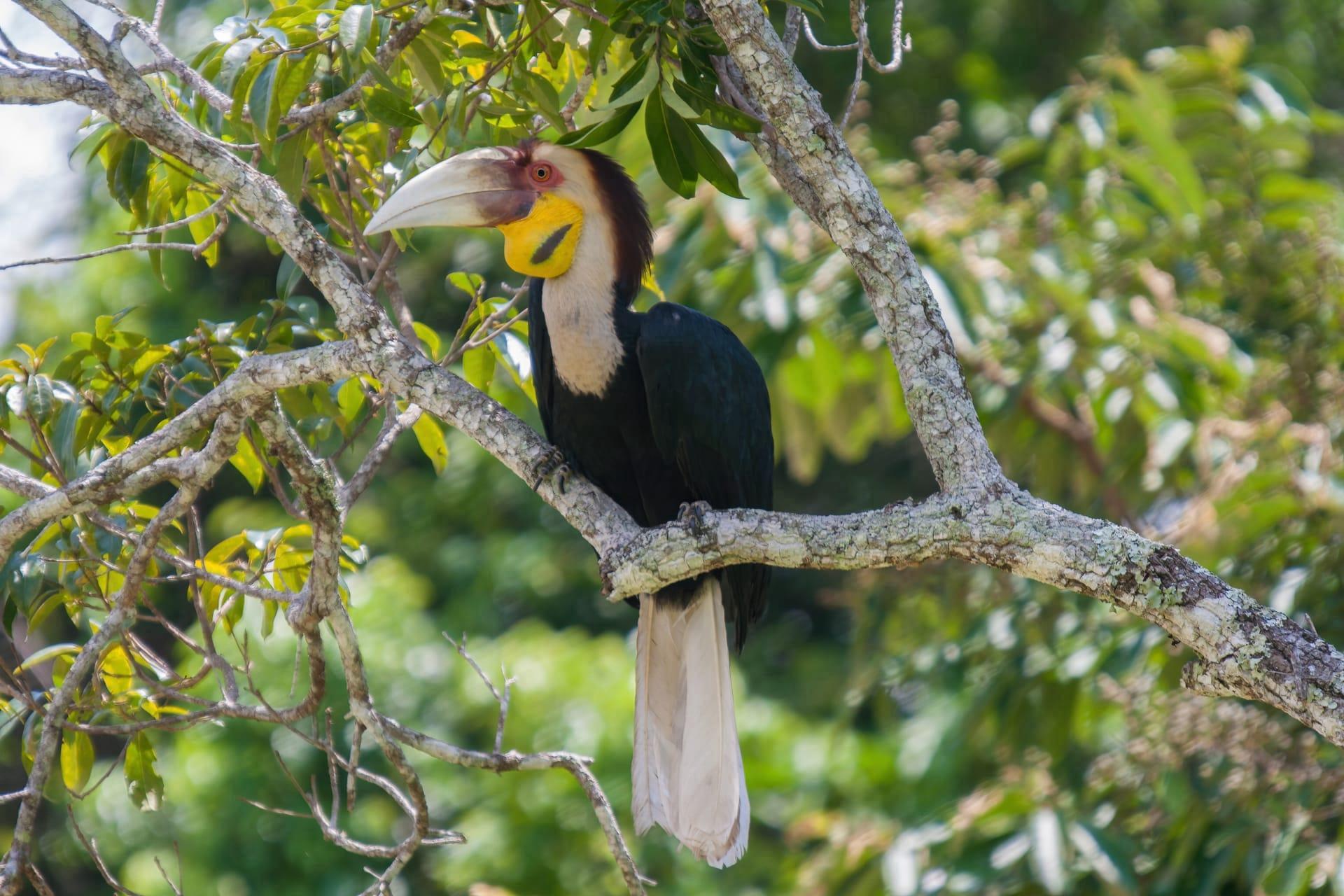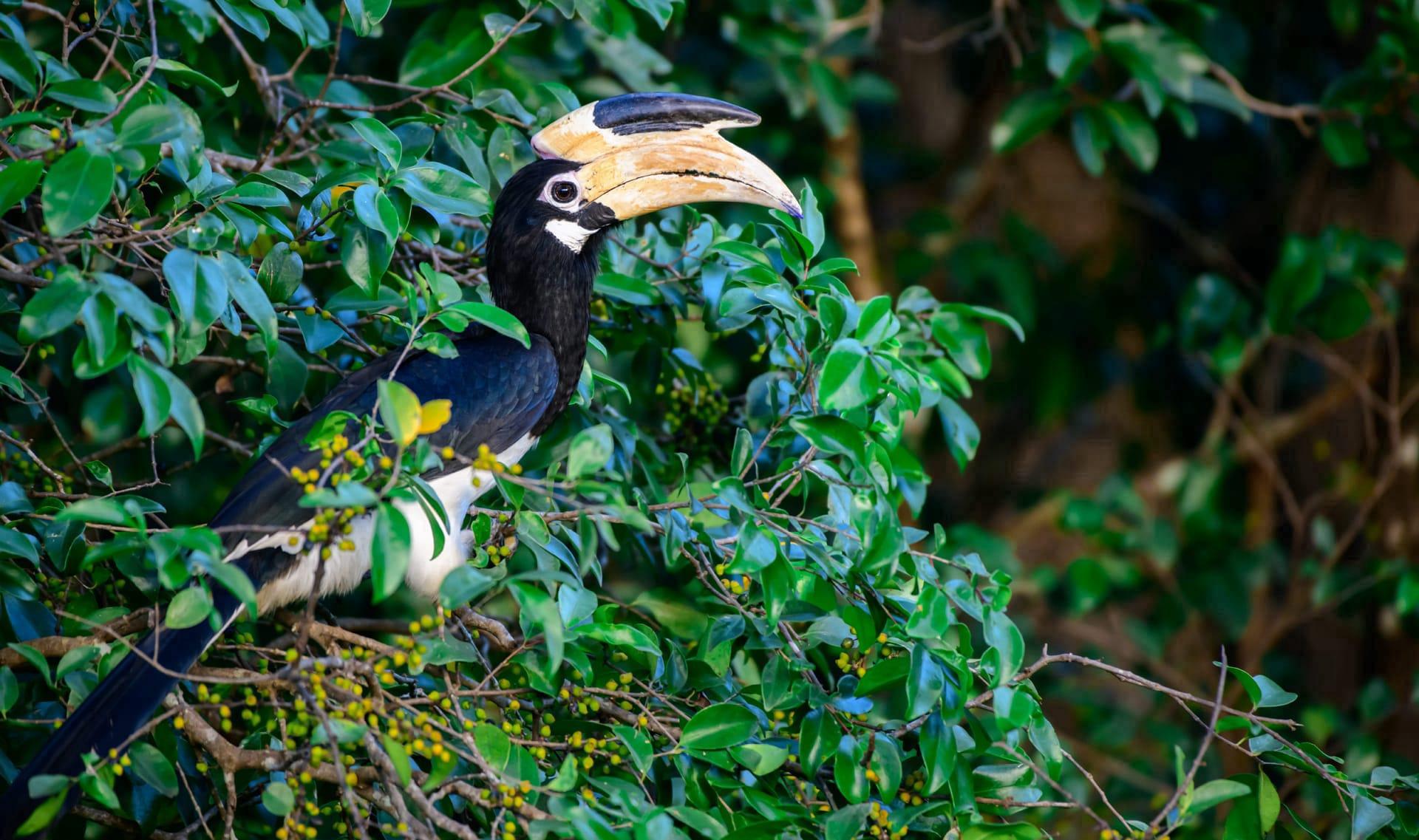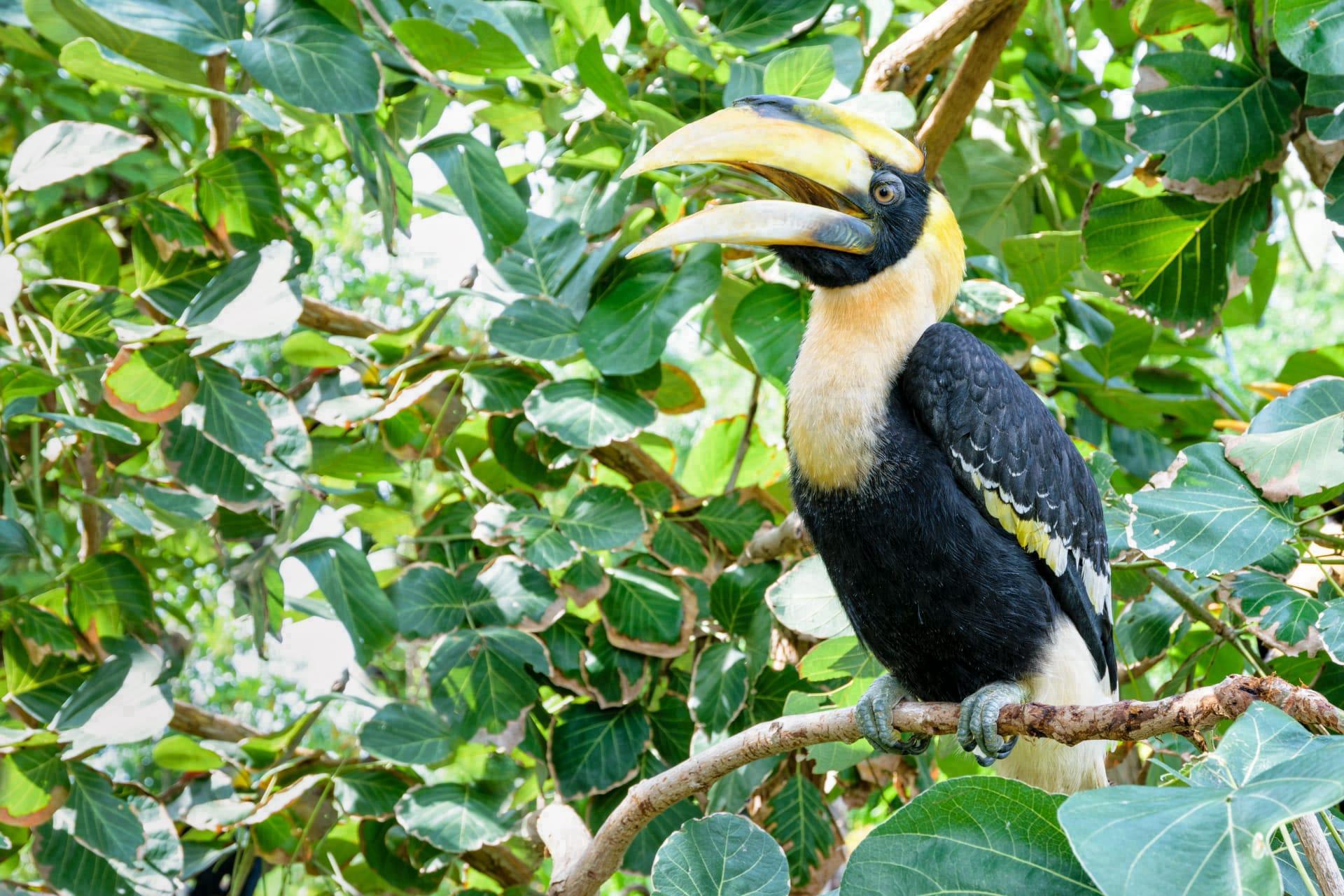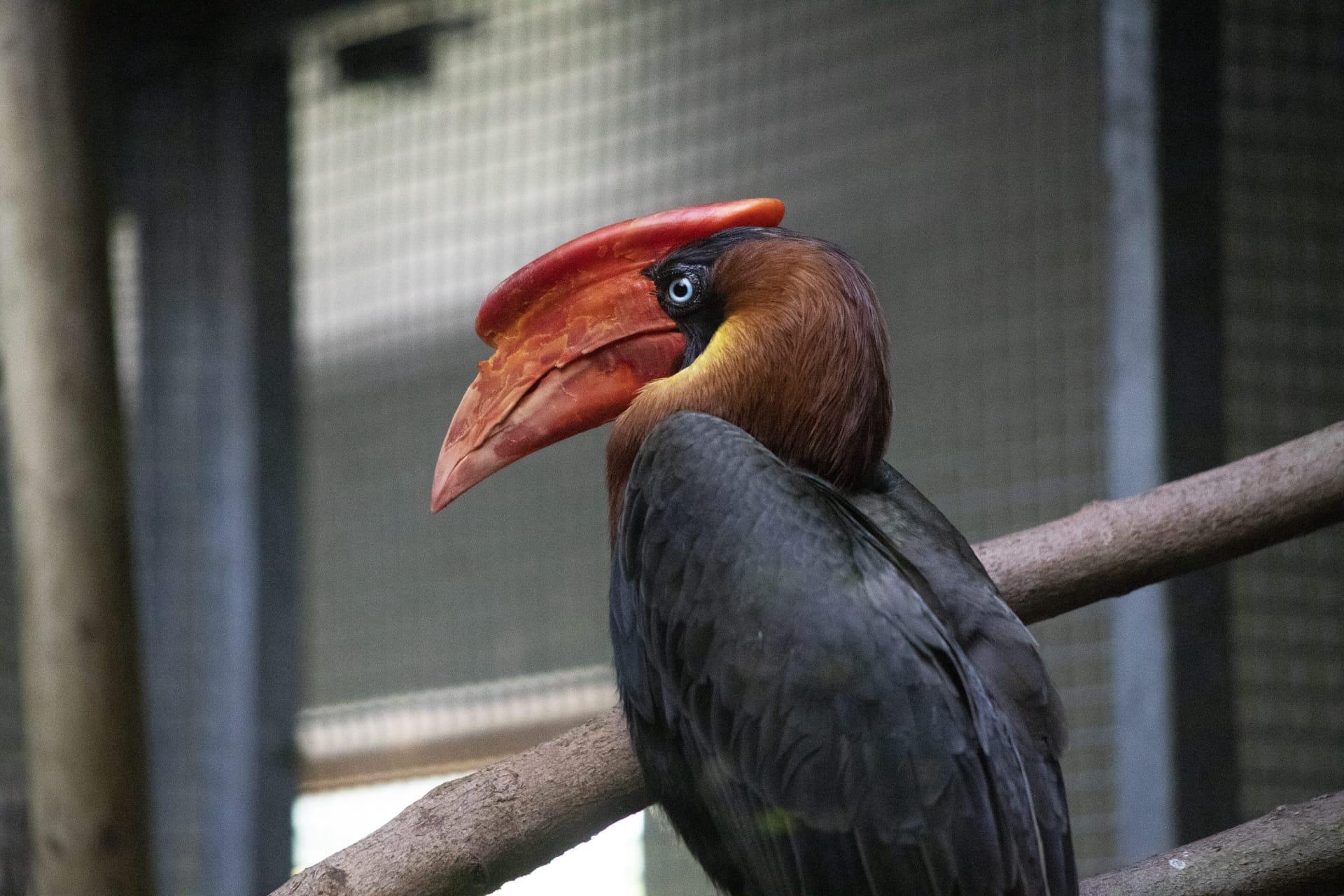Hornbill Characteristics
- Home /
- Mini Encyclopedia /
- Animal /
- Hornbill Characteristics
1
Hornbills are fascinating birds, notable for their distinctive bill and casque. Their size varies among species, with the smallest being the Red-billed Dwarf Hornbill, measuring about 16 inches in length, and the largest being the Great Hornbill, reaching up to 63 inches in wingspan. These birds are relatively long-lived, with some species like the Rhinoceros Hornbill living for up to 35 years in the wild. Their lifespans can extend further in captivity, with some reports of individuals living up to 50 years.
The most unique organ of a hornbill is undoubtedly its bill and casque. This structure is not only striking in appearance but also serves multiple functions. It's used in foraging, as a weapon for defense, and as a tool for building nests. The casque, a hollow structure on top of the bill, varies in size and shape among species and can be used for amplifying calls. Intriguingly, the casque is believed to play a role in sexual selection, with larger and more vibrantly colored casques being more attractive to potential mates.

2
Question: Why do hornbills seal their nests?
Answer: Hornbills exhibit a unique nesting behavior, where the female seals herself inside a tree cavity, leaving only a small slit through which the male can pass food. This behavior serves several purposes. Firstly, it protects the eggs and the female from predators. Secondly, it maintains a stable microclimate within the nest, which is crucial for egg development. The sealing material is a mixture of mud, fruit pulp, and feces, and the female breaks free from the nest once the chicks are sufficiently developed. This remarkable strategy highlights the hornbill's adaptive behaviors in ensuring the survival of its offspring.

3
Hornbills are adept fliers, capable of maneuvering through dense forests with agility. Their flight is characterized by a series of powerful wing flaps followed by gliding, producing a distinctive whooshing sound. This ability allows them to traverse large areas in search of food and nesting sites. Additionally, hornbills are known for their impressive courtship flights, involving acrobatic displays and aerial chases.
In terms of feeding, hornbills are primarily frugivores, but their diet can be quite varied, including insects, small mammals, and birds. Their large bills are crucial in foraging; they use them to pluck fruit from branches or to dig insects out of bark. Hornbills play a vital role in their ecosystems as seed dispersers, aiding in the regeneration of forests. Their feeding habits reflect a fine balance between their needs and the health of their habitat.

4
Hornbills are typically found in tropical and subtropical regions of Africa, Asia, and Melanesia. They inhabit a range of environments including dense rainforests, savannas, and even montane forests at altitudes of up to 6,500 feet. Their choice of habitat is largely influenced by the availability of fruit-bearing trees and suitable nesting sites, typically large trees with cavities.
The breeding habits of hornbills are quite unique. After mating, the female hornbill enters a cavity in a tree and seals herself inside, leaving only a small slit. Here, she lays her eggs and remains enclosed throughout the incubation period, relying on the male to bring food. Once the chicks are old enough, the female breaks out of the nest, and both parents continue to care for the young. This unusual nesting strategy reflects a remarkable adaptation to their environment, ensuring the safety of the offspring from predators.

5
Book: "The World of Hornbills" by Dr. Alan Kemp, published in 1995. This book is a comprehensive guide to hornbill species worldwide, focusing on their biology, behavior, and conservation. Kemp, a renowned ornithologist, provides detailed descriptions of each species, accompanied by vivid photographs and illustrations. The book, hailing from South Africa, is a valuable resource for both bird enthusiasts and conservationists, offering insights into the complex lives of these unique birds.
Book: "Hornbills in the City" by Anuj Jain, published in 2011. This book, based in Singapore, tells the story of how a pair of Oriental Pied Hornbills started nesting in urban Singapore, marking a significant event in the city's biodiversity. Jain, a nature conservationist, chronicles the challenges and triumphs of conserving hornbills in an urban environment. The book combines personal narrative with scientific information, making it an engaging read for those interested in urban wildlife conservation.